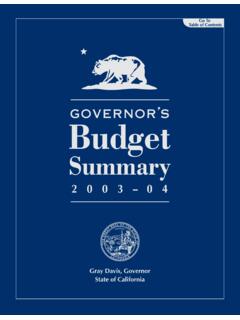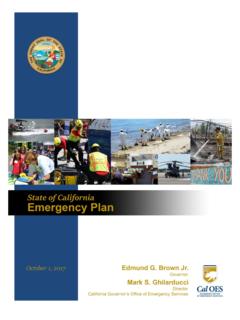Transcription of Page intentionally blank - TVA
1 Document Type: EIS-Administrative Record Index Field: Final Environmental Document Project Name: Douglas and Nolichucky Tributary Reservoirs Land Management Plan Project Number: 2008-30 DOUGLAS-NOLICHUCKY TRIBUTARY RESERVOIRS LAND MANAGEMENT PLAN AND ENVIRONMENTAL IMPACT STATEMENT VOLUME III Nolichucky Reservoir PREPARED BY: TENNESSEE VALLEY AUTHORITY AUGUST 2010 For information, contact: Tennessee Valley Authority Holston-Cherokee-Douglas Watershed Team 3726 E. Morris Boulevard Morristown, Tennessee 37813 Phone: (423) 585-2123 Fax: (423) 585-2151 Page intentionally blank Contents TABLE OF CONTENTS INTRODUCTION .. III-1 Background .. III-1 Purpose .. III-2 PLANNING PROCESS .. III-5 Planning Goals .. III-11 Allocation Process .. III-11 Committed Land .. III-12 Uncommitted Land .. III-12 Property Administration .. III-12 Landrights .. III-13 NOLICHUCKY RESERVOIR REGIONAL OVERVIEW.
2 III-15 The Past .. III-15 The Project .. III-18 The Present Shoreland .. III-19 Physiographic Overview .. III-19 Land Use and Prime Farmland .. III-19 III-22 Terrestrial Ecology .. III-24 Invasive Nonnative Species .. III-25 Endangered and Threatened Species .. III-25 Plants .. III-26 Terrestrial Wildlife .. III-27 Aquatic Wildlife .. III-27 Wetlands .. III-27 III-28 Cultural and Historic Resources .. III-28 Managed Areas and Sensitive Ecological Sites .. III-29 Water Quality .. III-29 Aquatic Ecology .. III-30 The Future .. III-33 Parcel Allocations .. III-33 PARCEL DESCRIPTIONS .. III-35 LITERATURE CITED .. III-63 GLOSSARY OF TERMS .. III-65 Final Environmental Impact Statement III-iNolichucky Reservoir Land Management Plan LIST OF TABLES AND FIGURE Table 1. Land Use Zone Definitions .. III-6 Table 2. Developed Recreation Areas on TVA Lands on Nolichucky Reservoir .. III-23 Table 3. Federally Listed and State-Listed Species Within and Near Nolichucky Reservoir.
3 III-26 Table 4. Index of Biotic Integrity Ratings for Fish Community Samples Collected in the Nolichucky River, 1990-2000 .. III-32 Table 5. Benthic Index of Biotic Integrity Ratings for Benthic Invertebrate Community Surveys in the Nolichucky River, 2000 .. III-32 Table 6. Nolichucky Reservoir Parcel Allocations .. III-34 Figure 1. Percent of TVA Public Land Acreage Allocated by Zone on the Nolichucky Reservoir and River .. III-21 Final Environmental Impact Statement III-ii Introduction Final Environmental Impact Statement INTRODUCTION The Nolichucky Reservoir Land Management Plan is a study of the Tennessee Valley Authority (TVA) managed public land surrounding Nolichucky Reservoir. It is one of two reservoir land management plans (RLMPs) associated with an environmental impact statement (EIS) for the Douglas-Nolichucky tributary reservoirs. The EIS, Volume I, contains information on the purpose of and need for action, the alternatives, the affected environment, and environmental consequences of TVA s proposed actions.
4 In addition, the EIS contains a summary, a list of preparers, a list of those who received a copy of the EIS, supporting information, an index, and appendices. This document provides background information about TVA land management throughout its history and specifically TVA management of public land surrounding Nolichucky Reservoir. It explains the purpose of this RLMP and describes the process used in its development. The RLMP includes the Planning Process, which list the objectives around which the RLMP was developed and a summary of the allocation process. The Nolichucky Reservoir Regional Overview describes the natural and social development of the reservoir and the surrounding area. The Parcel Descriptions include total acreage and parcel descriptions documenting land management allocations. The allocation map is stored in the pocket on the back cover of this RLMP. Background TVA has been charged by Congress with improving navigation, controlling floods, providing for the proper use of marginal lands, providing for industrial development, and providing power at rates as low as is feasible, all for the general purpose of fostering the physical, economic, and social development of the Tennessee Valley region.
5 The lands that TVA holds as steward in the name of the United States of America (USA) are some of the most important resources of the region. These lands have provided the foundation for the dams and reservoirs that protect the region from flooding and secure for its residents the benefits of a navigable waterway and low-cost hydroelectricity. TVA s public lands are the sites for its power generating system and arteries for delivering power to those that need it. Many of the region s parks, recreation areas, and wildlife refuges that are so important for the region s quality of life are on lands TVA made available. TVA public lands often have been the catalyst for public and private economic development that supports all of these activities. The USA, through TVA, originally acquired approximately million acres of land in the Tennessee River Valley. The construction and operation of the reservoir system inundated approximately 470,000 acres with water. Approximately 508,000 acres have been transferred to other federal and state agencies for public uses or sold for private uses.
6 The USA owns approximately 293,000 acres that TVA manages pursuant to the TVA Act of 1933. Nolichucky Reservoir Land Management Plan TVA originally acquired a total of 3,757 acres of land above full summer pool for the Douglas and Nolichucky tributary reservoirs and associated hydroelectric generating facilities. Over the years, TVA has transferred some of this land to other public agencies, primarily the Tennessee Wildlife Resources Agency (TWRA). TVA presently manages a total of 3,191 acres of land on these reservoirs that is the subject of this Douglas and Nolichucky Tributary Reservoirs Land Management Plan (DNTRLMP). As stewards of this important resource, TVA s policy is to manage its lands to protect the integrated operation of the TVA reservoir and power systems, to provide for appropriate public use and enjoyment of the reservoir system, and to provide for continuing economic growth in the Tennessee Valley region. TVA recognizes that historical land transfers have contributed substantially to meeting these multipurpose objectives, and it is TVA s policy to preserve reservoir lands remaining in public ownership under its control except in rare instances when the benefits to the public will be so significant that transferring the land is justified.
7 Purpose TVA s Land Policy (Volume I, Appendix A) was approved by the TVA Board of Directors on November 30, 2006. This policy governs how land is planned, including whether it is disposed of or retained. In order to systematically manage TVA public land around its reservoirs, TVA develops RLMPs, which seek to integrate land and water program goals, provide for the optimum public benefit, and balance competing and sometimes conflicting resource uses. By providing a clear statement of how TVA intends to manage land and by identifying each parcel for specific purposes, TVA hopes to facilitate decision-making for the use of the public land in its care. Land planning guides TVA in the management of resources and property administration decisions on land under its control. RLMPs are approved by the TVA Board of Directors and adopted as agency policy, providing for long-term land stewardship and accomplishment of TVA responsibilities under the TVA Act. TVA's integrated resource management approach focuses on balancing flood control, navigation, power generation, water quality, recreation, and land use needs to obtain the optimum benefit for the whole system.
8 Land planning supports TVA's vision of generating prosperity in the Valley by addressing the goals of supporting a thriving river system and stimulating economic growth. To that end, the RLMP provides a framework for deciding the optimum use of TVA public land and promotes the efficient operation of the TVA reservoir system. This RLMP will guide resource management and administration decisions on approximately 1,136 acres around Nolichucky Reservoir, which are publicly owned and managed by TVA. It identifies the most suitable uses for 39 parcels of TVA public land, providing areas for project operations, sensitive resource management, natural resource conservation, Final Environmental Impact Statement III-2 Introduction Final Environmental Impact Statement III-3industrial/commercial development, recreation, and shoreline access. The 1,136 acres of TVA public land accounts for approximately 17 miles of Nolichucky River shoreline. Page intentionally blank Planning Process PLANNING PROCESS Under the TVA Act of 1933, TVA is responsible for the control and use of the Tennessee River and its tributaries and the development and use of the resources in the Tennessee Valley.
9 TVA has managed the public reservoir land under its stewardship to meet a wide range of regional and local resource development needs and to improve the quality of life, both within specific reservoir areas and throughout the Tennessee Valley. Reservoir properties, together with adjoining private lands, have been used for public parks, industrial development, commercial recreation, residential development, tourism development, and forest and wildlife management areas. Reservoir properties also meet a variety of other needs associated with local communities. An increasing demand for and use of reservoir land sometimes results in conflicting and uneconomical land use patterns between public and private use. These competing interests and development pressures, coupled with today s environmental awareness, underscore the necessity for a planned approach to the management of reservoir land and related resources. The land planning process is currently conducted under the National Environmental Policy Act (NEPA) and its implementing regulations, which require environmental review of federal actions having the potential to impact the environment.
10 Land planning supports state and federal goals to be environmentally responsible, stakeholder driven, and growth oriented, by providing a framework for deciding the best use of TVA-managed public land. The reservoir land management planning process allocates TVA fee-owned land to seven defined land use zones. The term land use zone(s) refers to a descriptive set of criteria that are given to distinct areas of land based on location, features, and characteristics (see Table 1 for land use zone definitions). The process includes resource data, computer analysis, and input from the public, other agencies, and knowledgeable TVA staff. A land use zone provides a clear statement of how TVA will manage public land and identifies land for specific uses; an RLMP minimizes conflicting land uses and makes it easier to handle requests for use of public land. This RLMP was developed by a team of land managers and technical experts from TVA, knowledgeable about the reservoir and its resources.
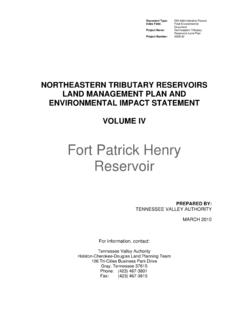
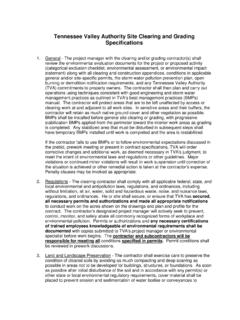
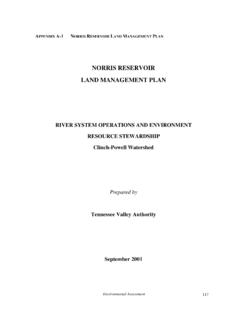
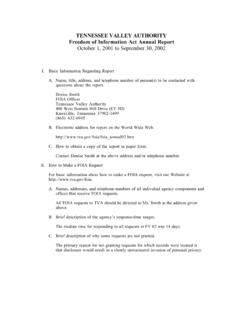
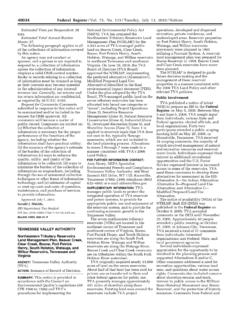
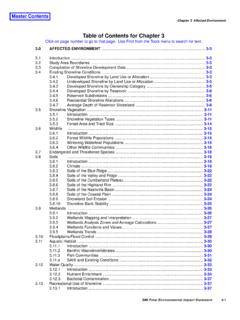
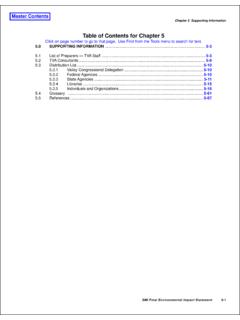
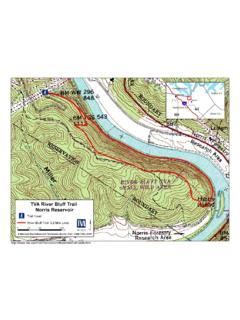
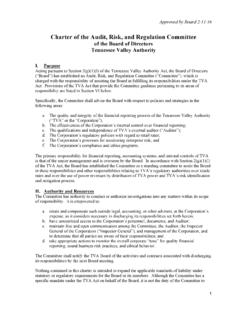
![[Page Intentionally Blank] - Police Executive …](/cache/preview/6/9/5/6/0/0/0/f/thumb-6956000f3f6abdc7d6fe85fa330b8ad5.jpg)



